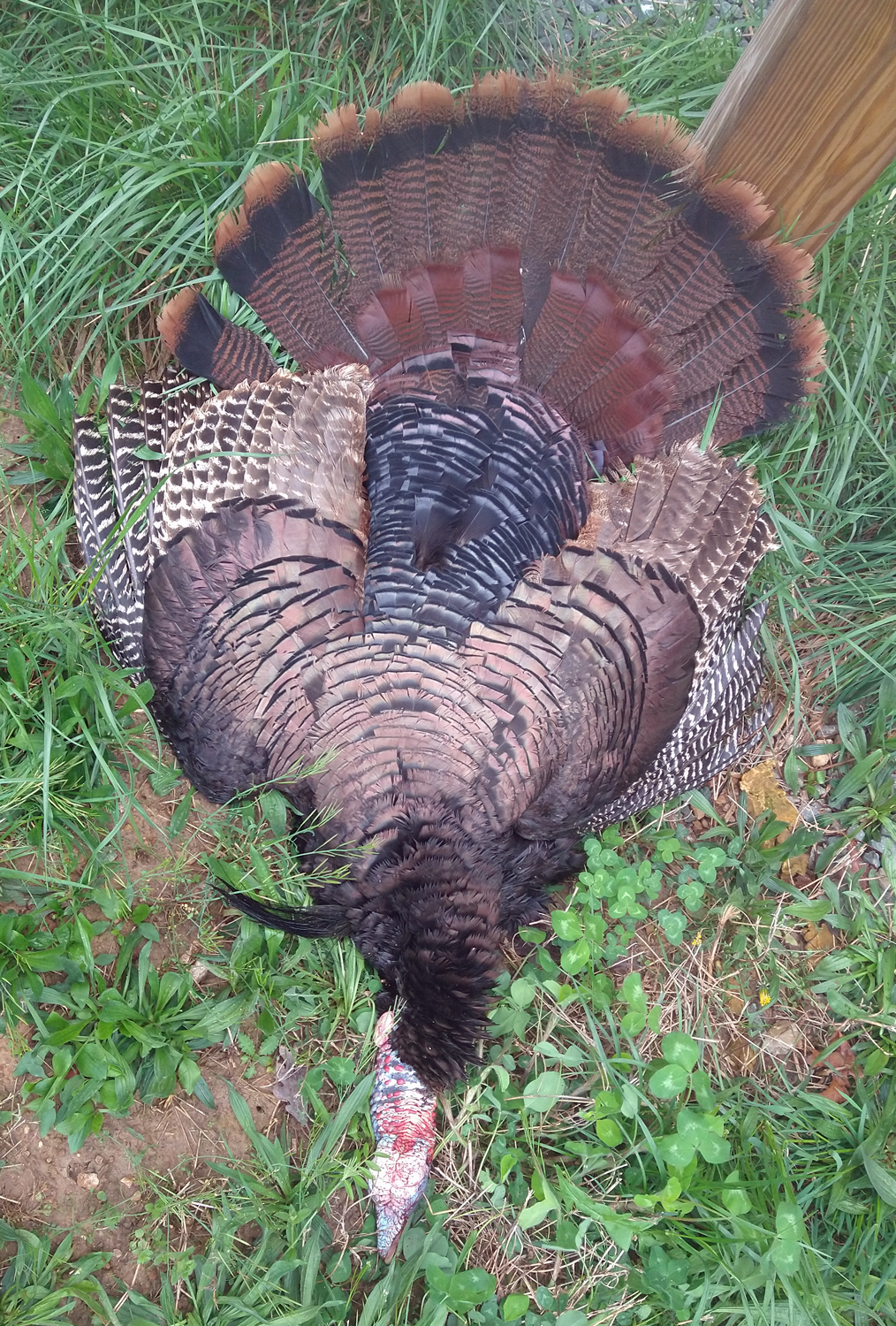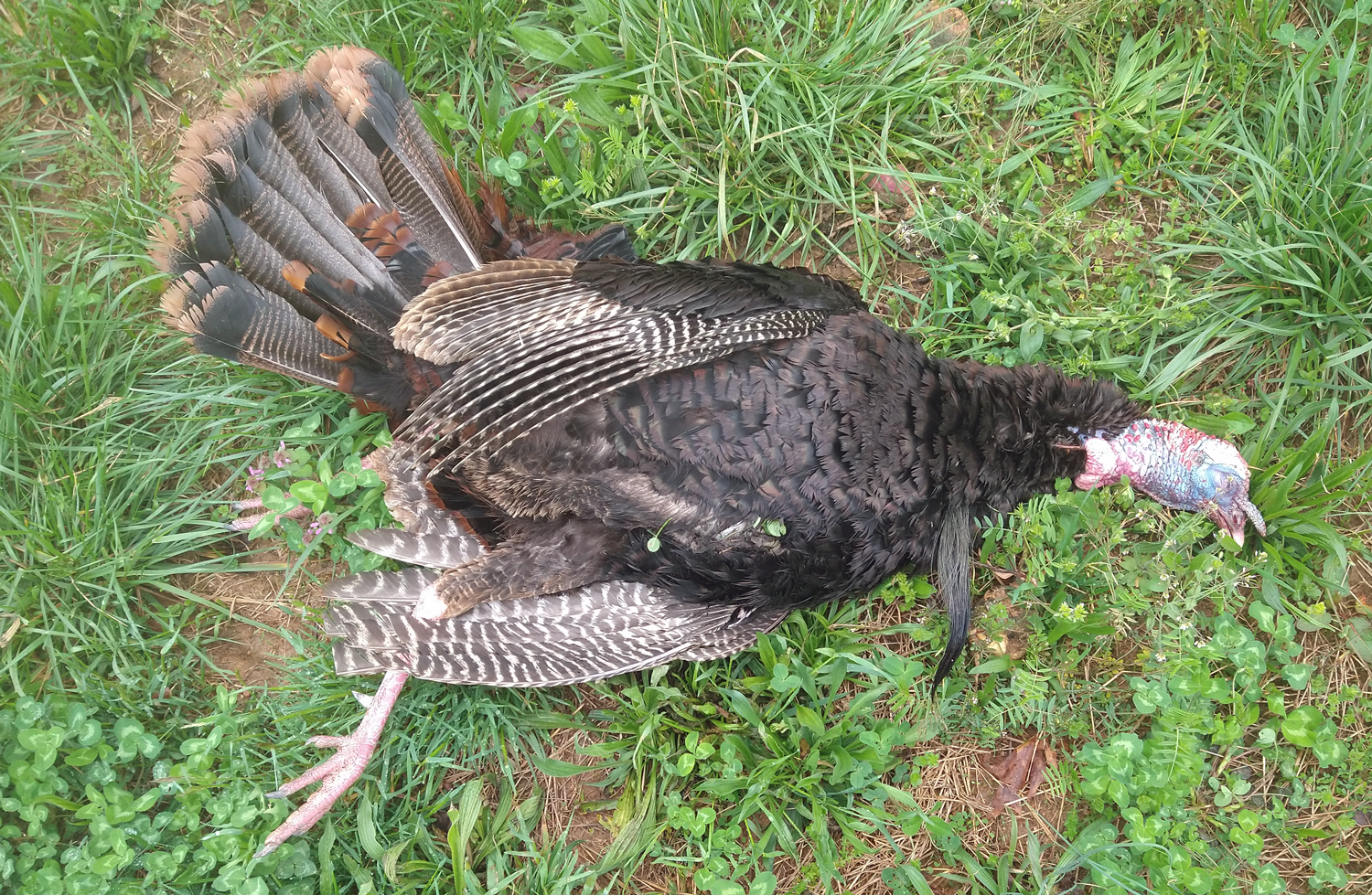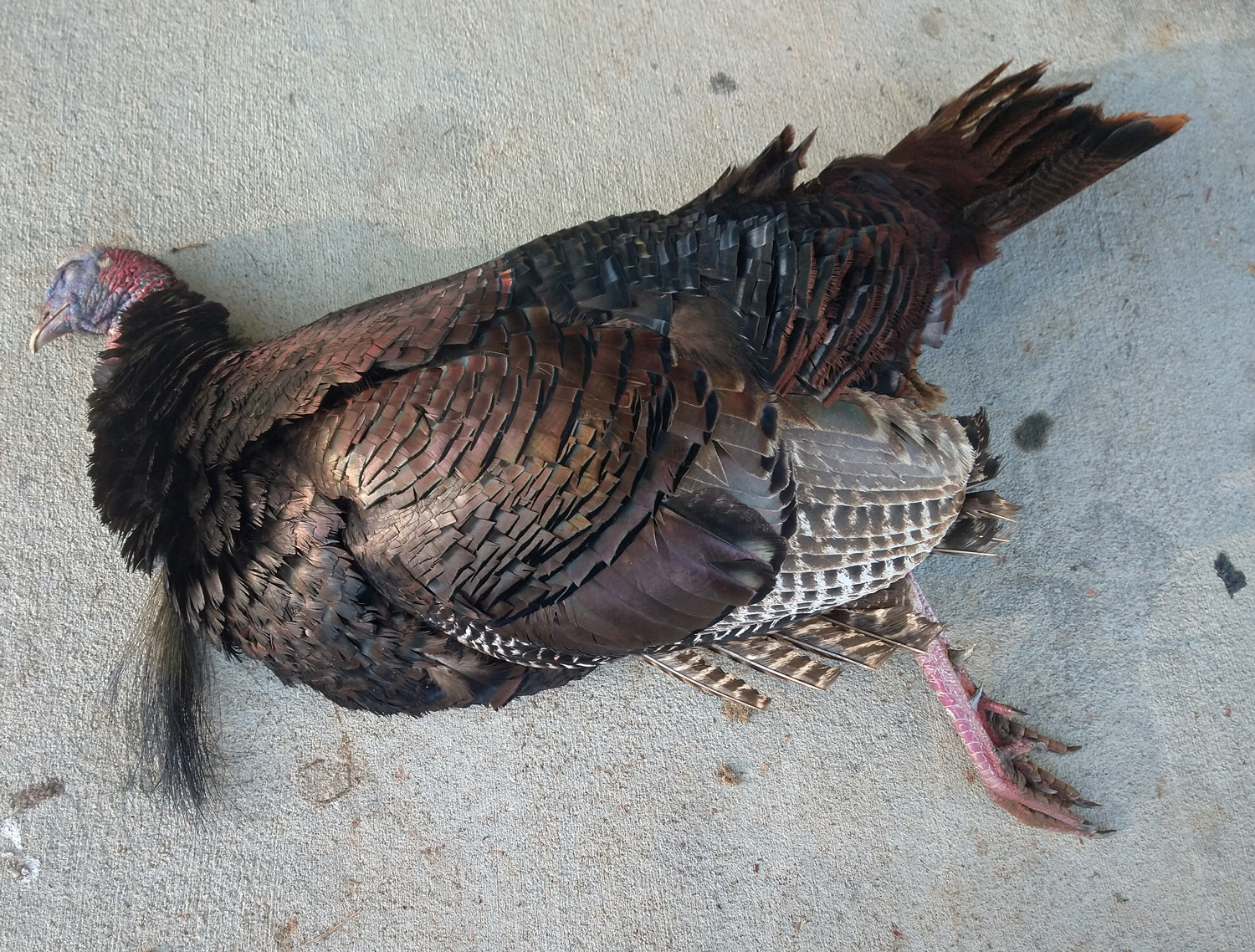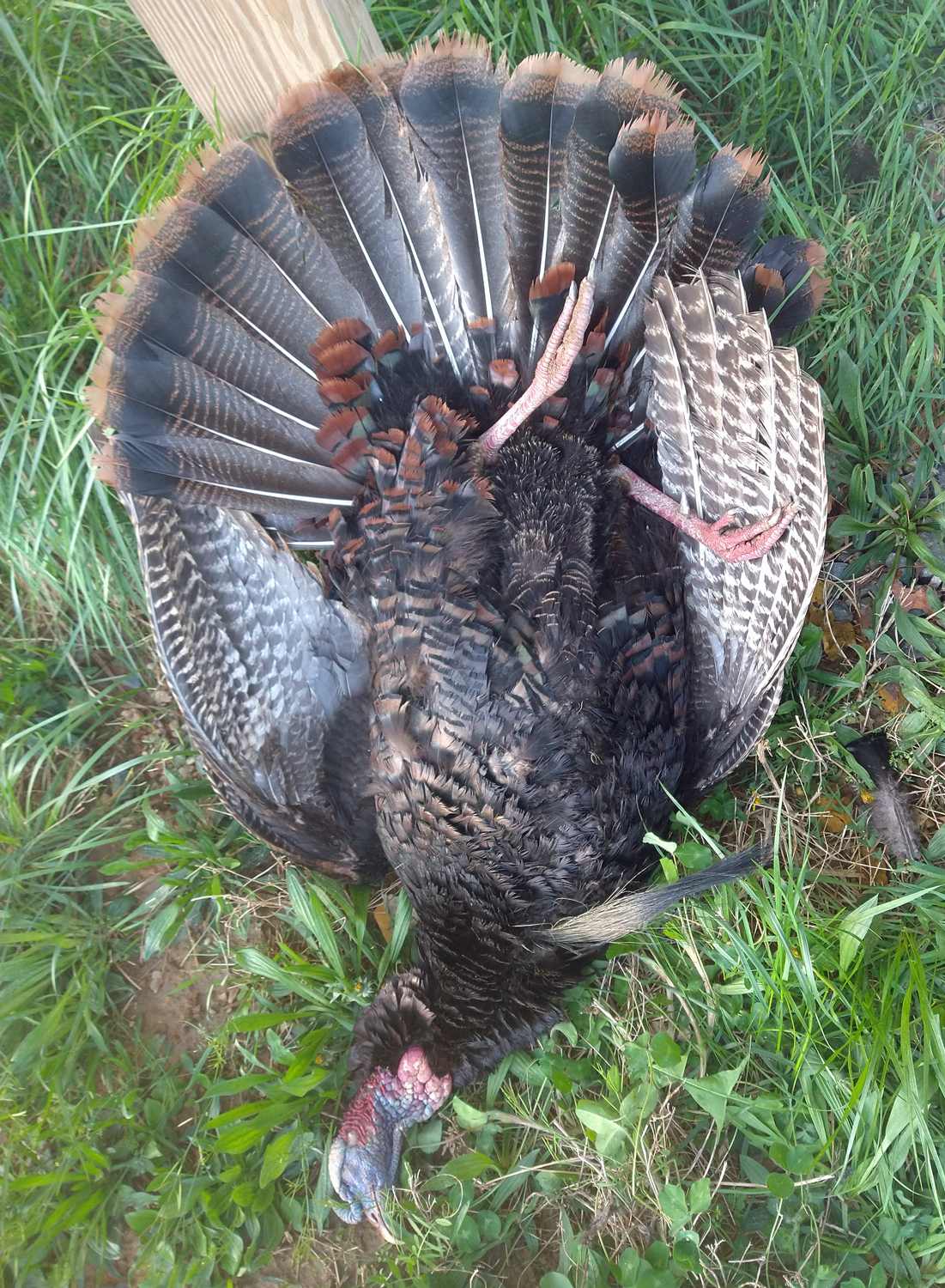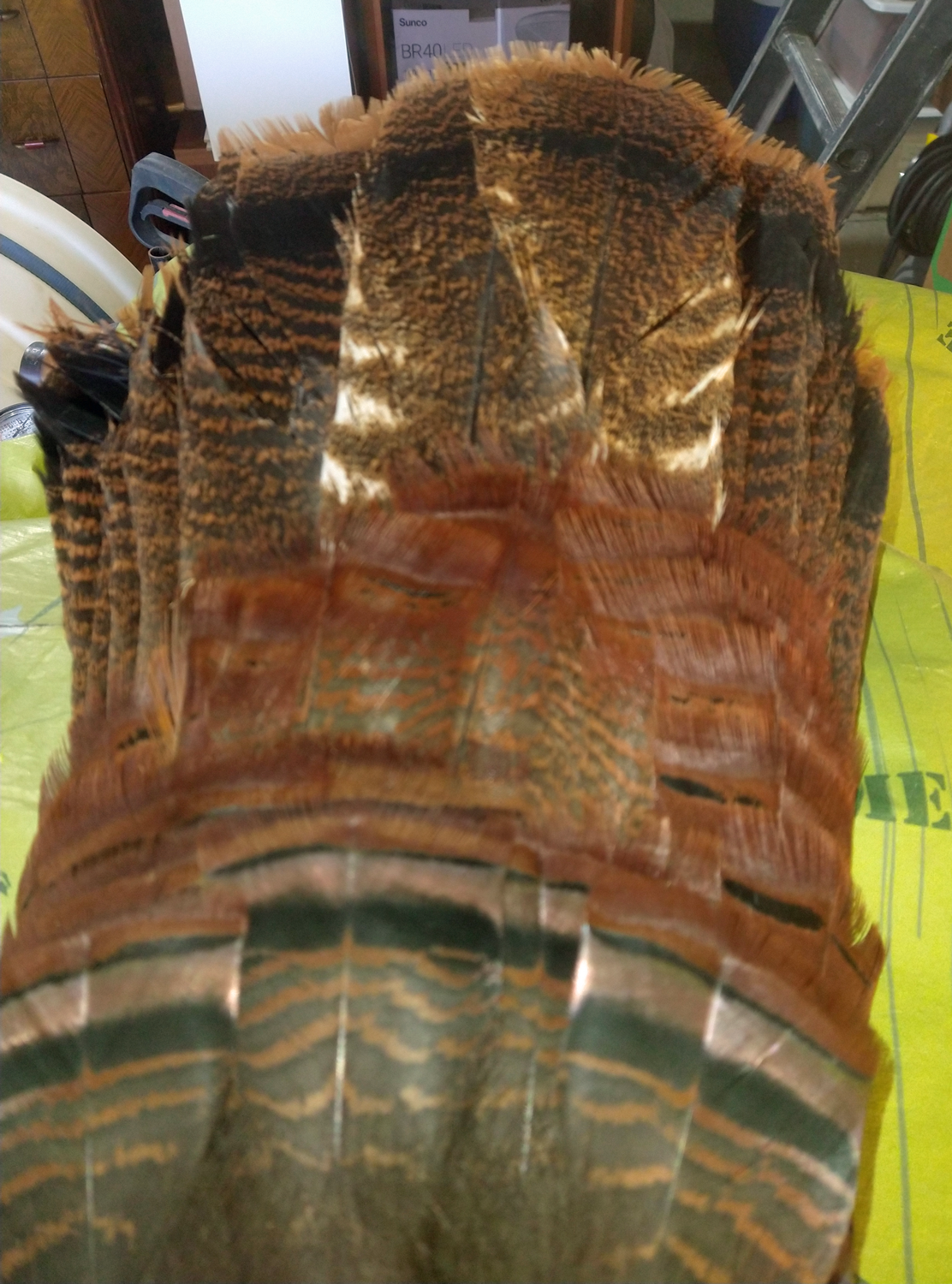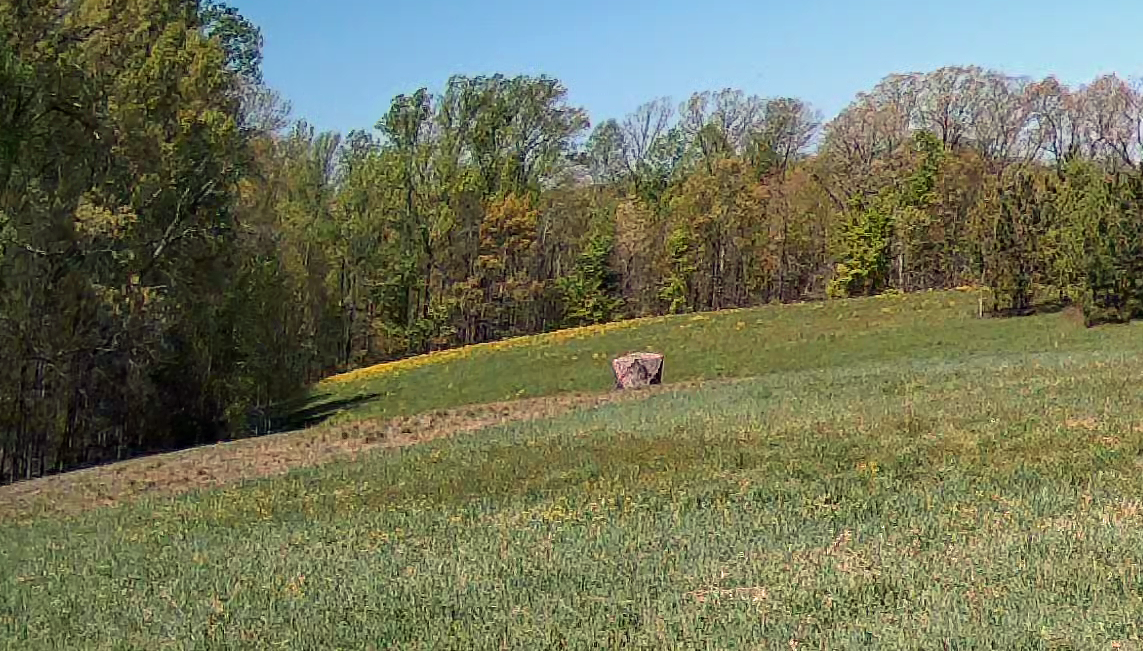yoderjac
Well-Known Member
I've been watching these turkey for several weeks. There is clearly two dominant gobblers that have been hanging around with the harem of hens. There is also one subdominant gobbler that is generally in the same area, but often some distance away. He seems to be careful of the other gobblers. He does get with them from time to time, but is tentative.
I got a distant video this morning demonstrating this behavior and a surprise. Let's start with some background information:
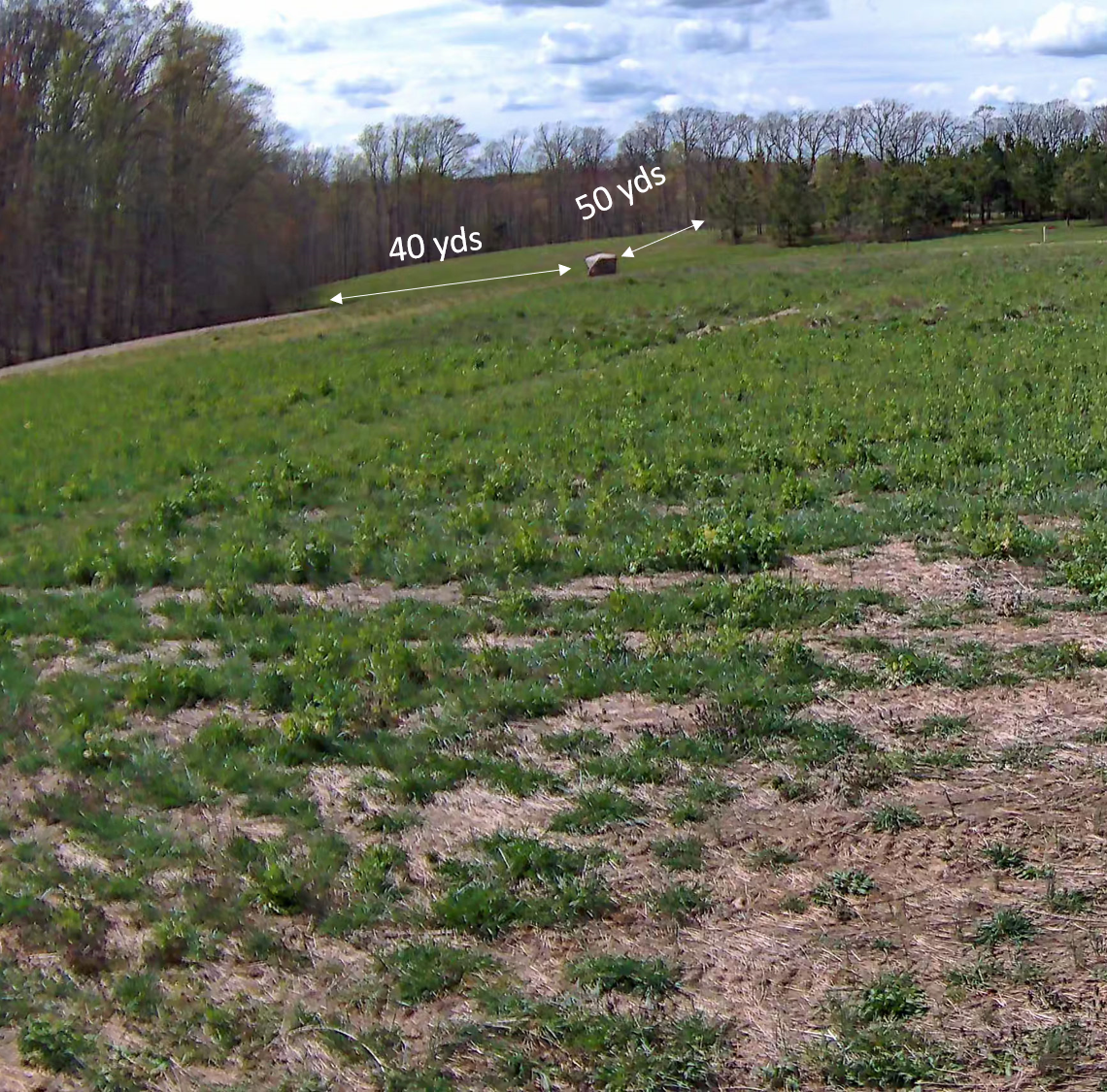
The video camera is an ultraHD security camera mounting on my barn. The blind is a little over 100 yards from the barn. The last pine in the buffer strip of pines to the right of the blind is about 50 yards from the blind and the closest tree in the hardwoods to the left of the blind is about 40 yards away. The picture is a bit deceiving because tat last pine in the strip is across a small dip. Most of my observations of the birds is in the field beyond the blind. That far wood line on the other side is approximately 300 yards from the barn. That field run parallel to the buffer strip of pines and has a hump in the middle so that back corner is only easily observable from my barn area. Sorry about the video quality. I've zoomed in a lot, but you'll get the idea of the general behavior.
Video Start time 0726 – End Time 0744
You fist see the two dominant gobblers come out with a couple hen. About 1/2 way through the video, the subdominant comes out on the blind side of the dip. He observes the other birds from that distance and struts from time to time, but not a lot. After a bit the gobblers go back into the hardwoods and it appears the subdominant bird joins them. The surprise is near the end of the video when the 4th gobbler appears in the field strutting. I know from direct observation the first 3 birds are mature. I'm not sure about the 4th gobbler.
I got a distant video this morning demonstrating this behavior and a surprise. Let's start with some background information:

The video camera is an ultraHD security camera mounting on my barn. The blind is a little over 100 yards from the barn. The last pine in the buffer strip of pines to the right of the blind is about 50 yards from the blind and the closest tree in the hardwoods to the left of the blind is about 40 yards away. The picture is a bit deceiving because tat last pine in the strip is across a small dip. Most of my observations of the birds is in the field beyond the blind. That far wood line on the other side is approximately 300 yards from the barn. That field run parallel to the buffer strip of pines and has a hump in the middle so that back corner is only easily observable from my barn area. Sorry about the video quality. I've zoomed in a lot, but you'll get the idea of the general behavior.
Video Start time 0726 – End Time 0744
You fist see the two dominant gobblers come out with a couple hen. About 1/2 way through the video, the subdominant comes out on the blind side of the dip. He observes the other birds from that distance and struts from time to time, but not a lot. After a bit the gobblers go back into the hardwoods and it appears the subdominant bird joins them. The surprise is near the end of the video when the 4th gobbler appears in the field strutting. I know from direct observation the first 3 birds are mature. I'm not sure about the 4th gobbler.

